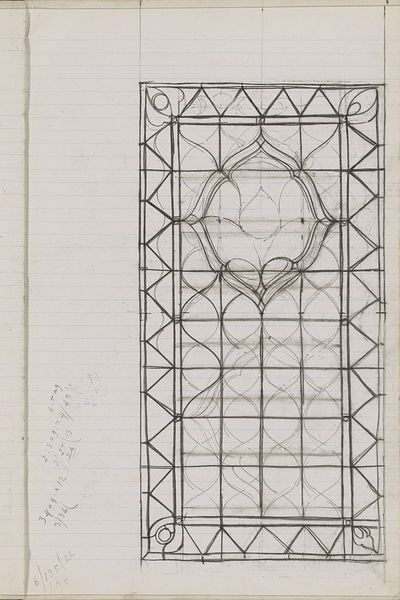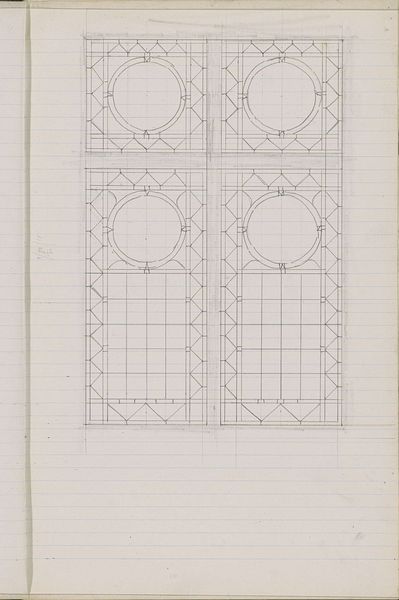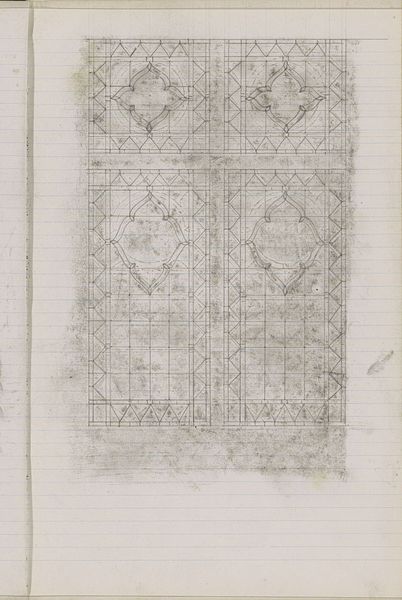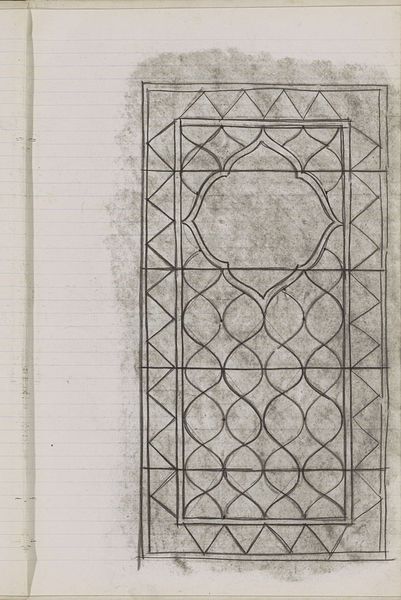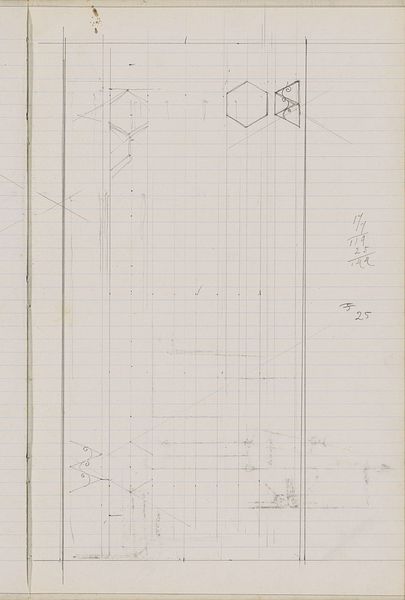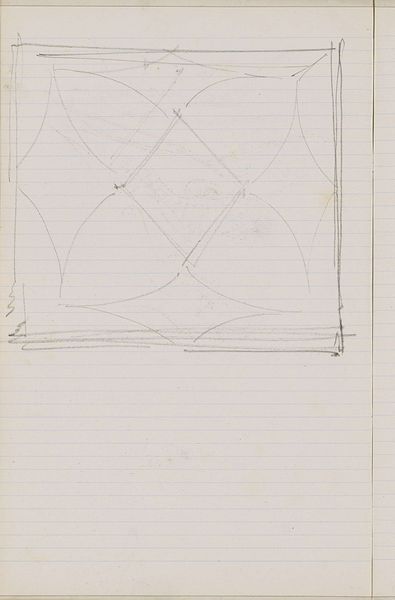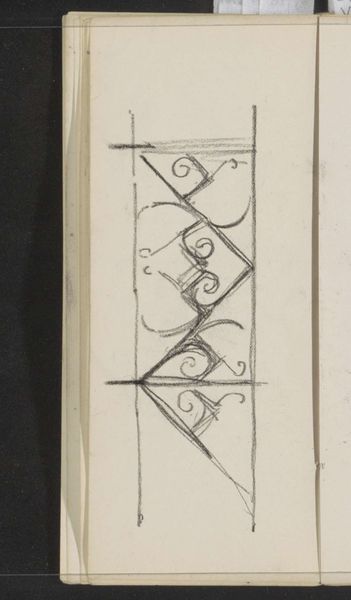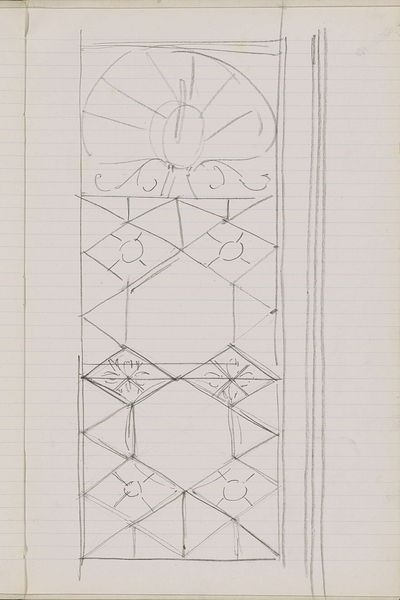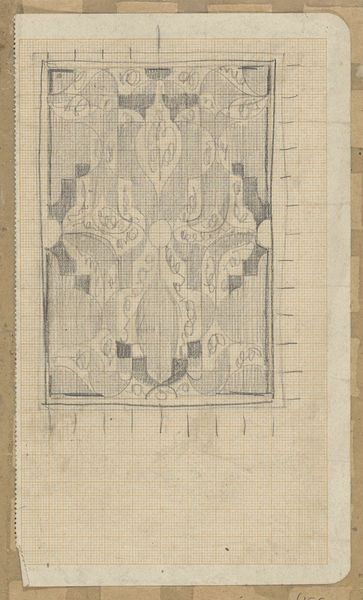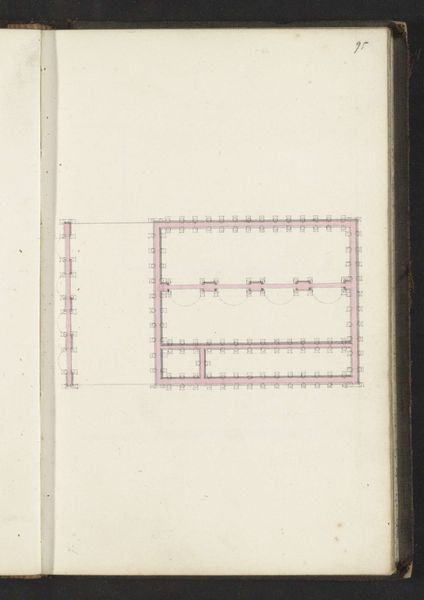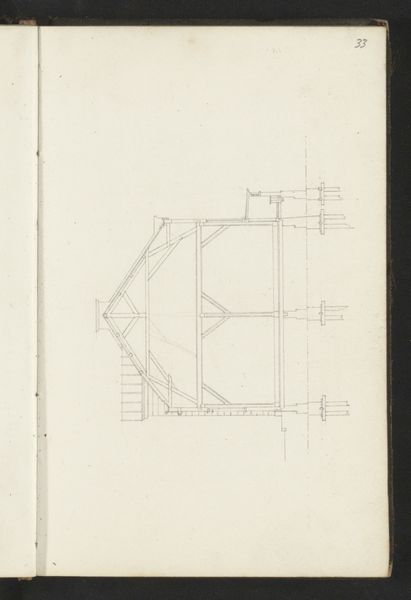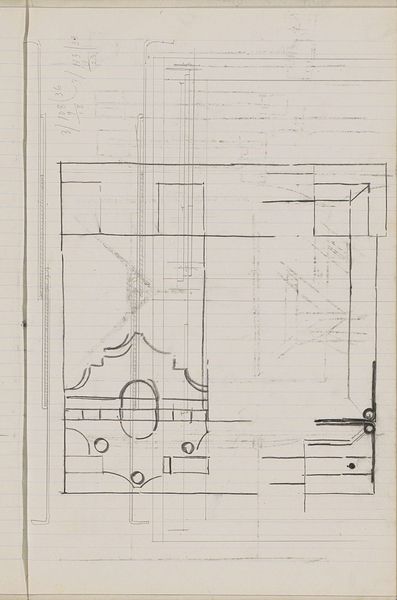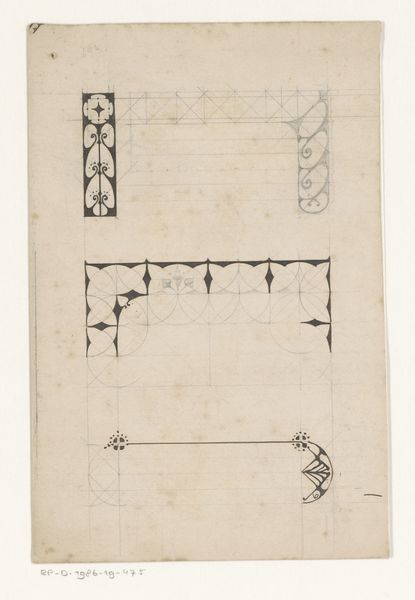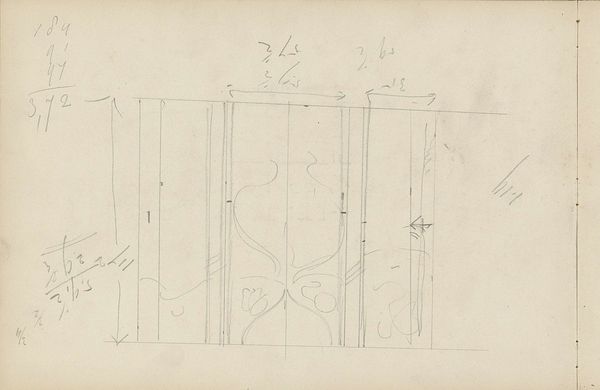
drawing, paper, pencil, architecture
#
drawing
#
art-nouveau
#
paper
#
geometric
#
pencil
#
line
#
architecture
Copyright: Rijks Museum: Open Domain
Editor: This drawing, "Ontwerp voor een glas-in-loodvenster," by Gerrit Willem Dijsselhof, created around 1901, is a preliminary sketch for a stained-glass window, made with pencil on paper. The intricate linework is pretty captivating. I’m curious about the blend of geometric and floral forms. How do you read this piece, considering its materiality and production? Curator: As a materialist, I see more than just a sketch; I see evidence of labor. Notice the lined paper, probably a common material readily available. This immediately places the work in a context of accessibility and process, moving away from preciousness often associated with “high art”. The pencil lines themselves are traces of the artist's hand, the physical act of designing. We should consider this not just aesthetically, but as a form of proto-manufacturing, a stage in the production of a glass window. Editor: That's interesting – looking at it as proto-manufacturing. The annotations on the side look like measurements. So, we're seeing the technical aspects of craft combined with artistic expression. Curator: Precisely. How might the final choice of glass, the leading, the very act of assembling these elements have affected Dijsselhof’s design choices here? And who were the artisans involved in the actual window creation? Their labor is inextricably linked to the 'art' itself. The Art Nouveau style emphasized the unification of arts and crafts, and understanding the production chain dismantles the myth of the solitary genius. Editor: So, instead of seeing the finished window, this sketch gives us insight into the process, revealing the social and economic dimensions involved in its creation. Curator: Exactly! We start questioning traditional art historical narratives and focusing instead on the collaborative aspect and material conditions behind the art object. Editor: I’ll never look at stained glass the same way again! It highlights that art-making is very rarely divorced from work. Curator: Hopefully, you'll also remember that a focus on materiality enriches, rather than reduces, our appreciation for artistic ingenuity and creative value.
Comments
No comments
Be the first to comment and join the conversation on the ultimate creative platform.
